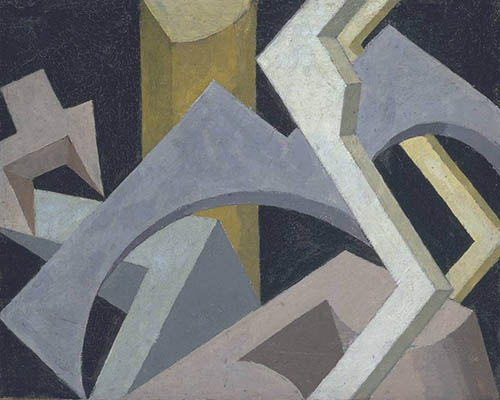Futurism



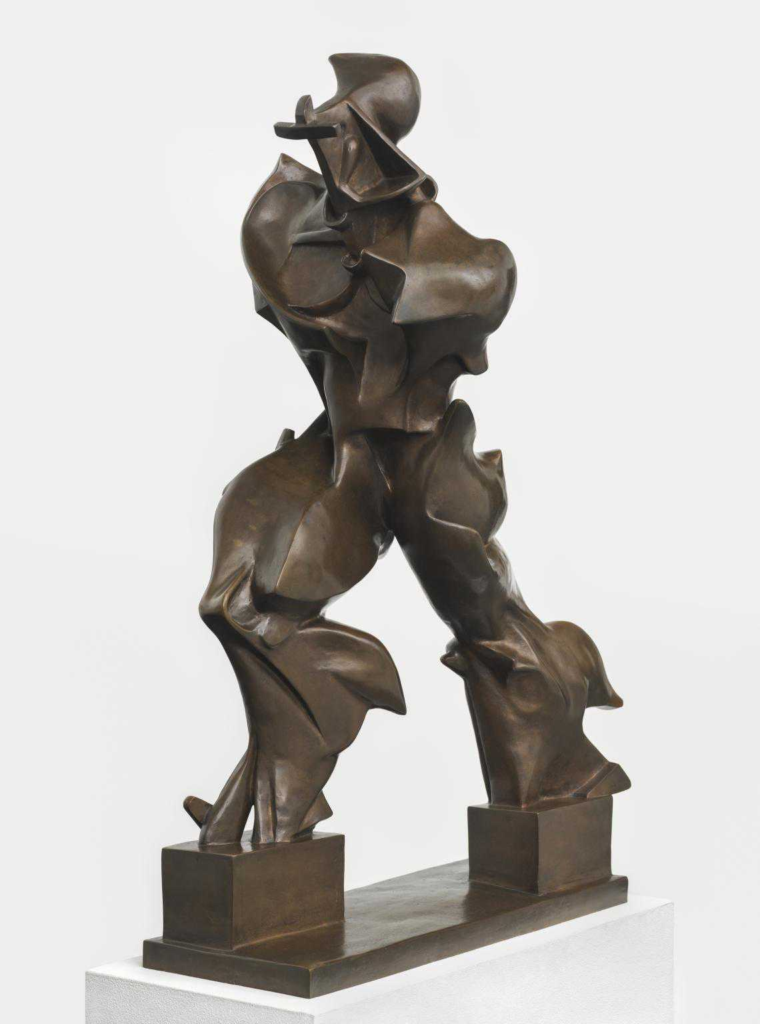

Futurism was an art movement formed in Italy as a way to look past its dark history and instead towards the brighter future, the metaphorical movement through time. It unified artists with a common ideal and approach: ‘we will free Italy from her innumerable museums which cover her like countless cemeteries’ (quote from manifesto). The work is often dynamic and energetic for this exact reason: to inspire and differentiate itself from dull history threatening to overshadow the future. Alternatively it could also be seen as a representation of the rapid post war society especially in terms of technology. The movement proceeded to inspire similar movements such as Russian Avant Garde and Dadaism. This movement was pioneered by a few key artists such as:
Carlo Carrà
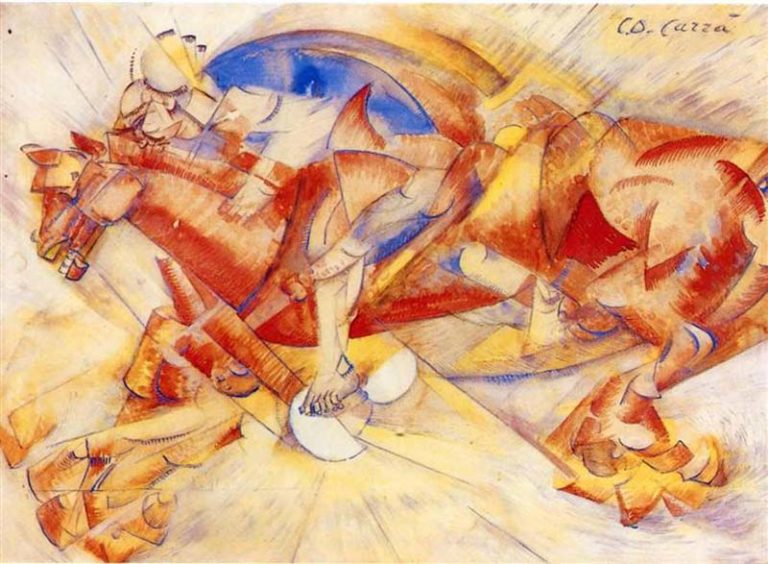
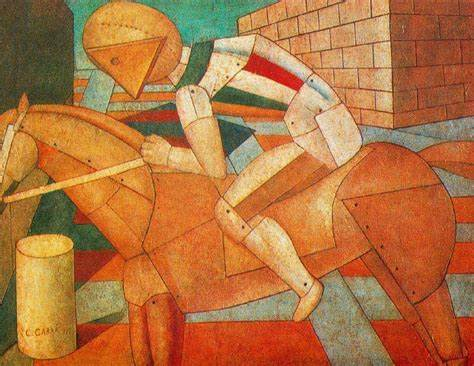
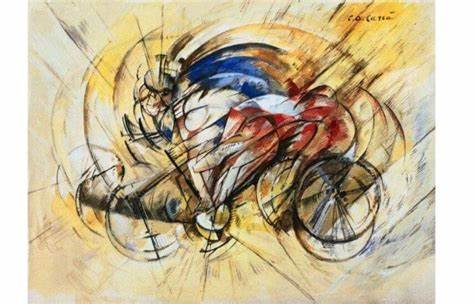
His work shows movement. He captures the appearance of a moving background and seemingly still foreground. He achieved this by painting a detailed bike or horse with the appearance of multiple exposures and a background made of light colours. Additionally to show the movement of the bike lines spread outwards from the centre creating leading lines. Additionally, he only uses the primary colours: blue, red and yellow. He creates the illusion of detail by contrasting fine line work and blocks of basic colour, this creates an image with what appears like plentiful detail but only actually resembles the limited level of detail processed when seeing a snippet of a moving structure.
Gino Severini
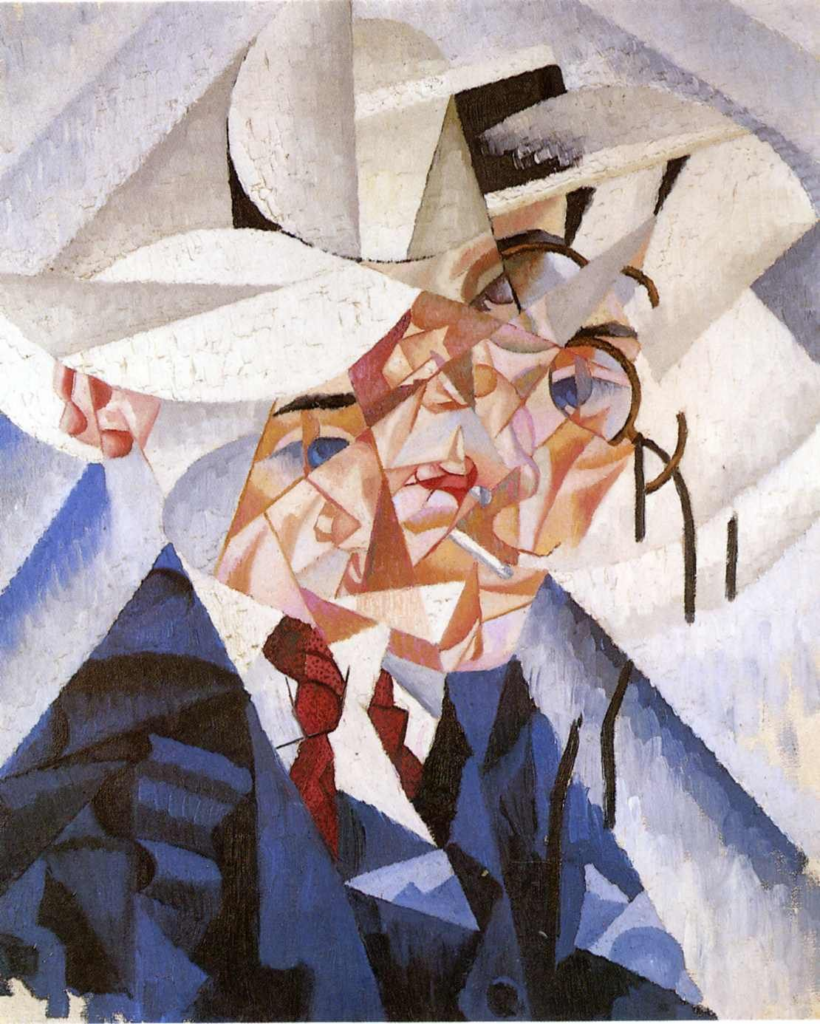
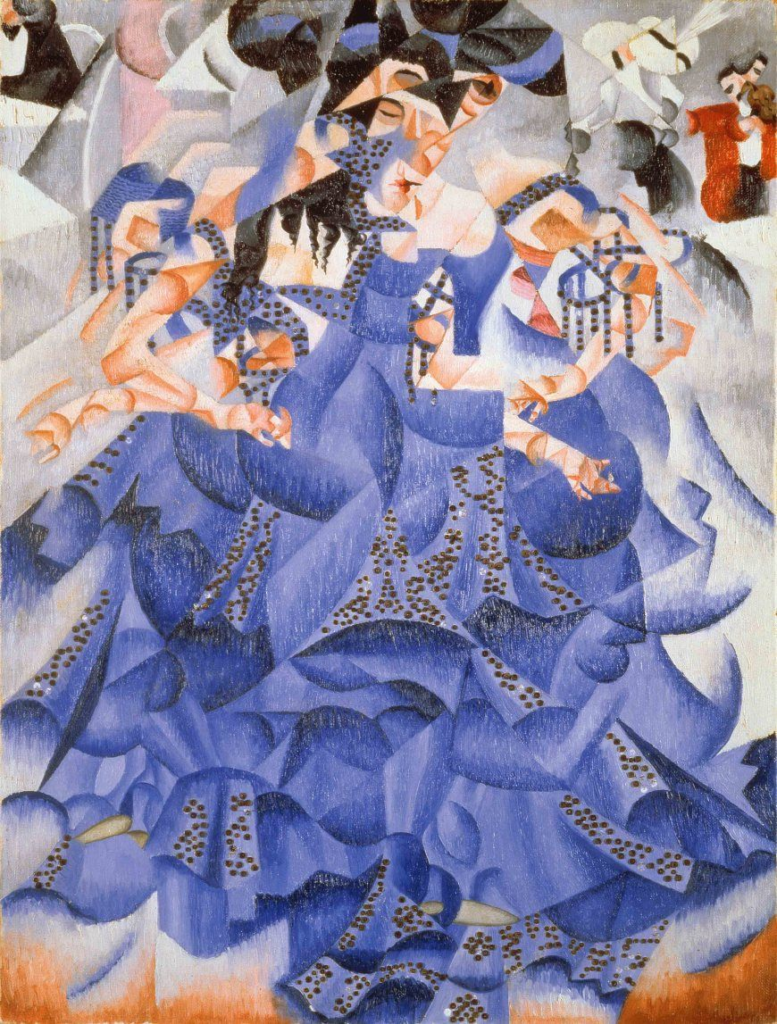

His work shows movement. This painting shows a dancer in the centre of the frame. The image is broken up into squares where each square is a different perspective. The very centre if the image appears still with each detail a similar perspective however moving outwards, each square looks more and more different to its neighbours. These sections show varyingly different perspectives which create the appearance of a spin such as her dress flaring, her hair showing up in different spots which contrasts with the lights which don’t move at all and appear still which makes movement seem clearer.
Umberto Boccioni

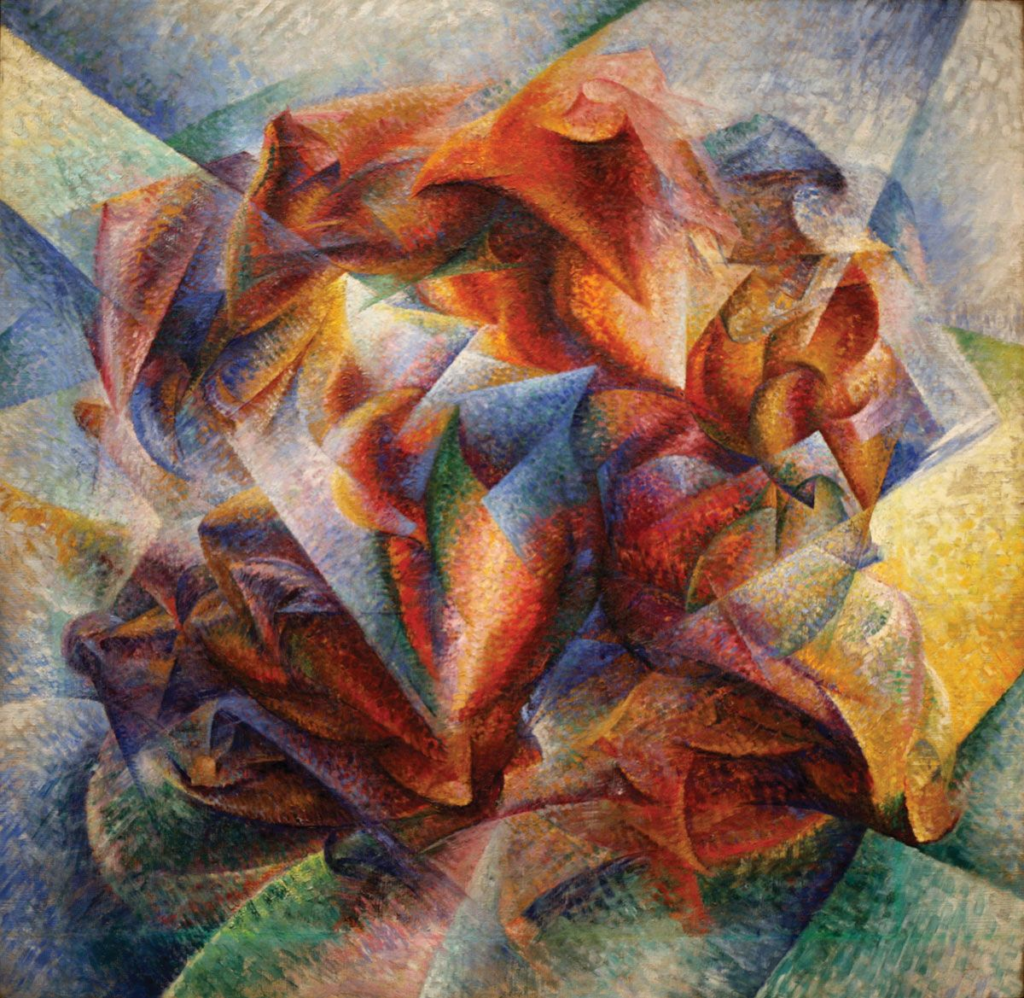
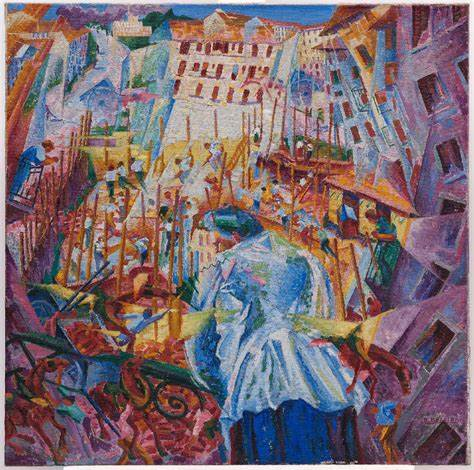
His work made use of bold colours, perspective and movement. This image creates a fish eye effect where the buildings around the edge seem to bend into a circular shape. This effect creates the appearance of perspective and looking out a keyhole. The colours are bold and shows a celebration.
Giacomo Balla
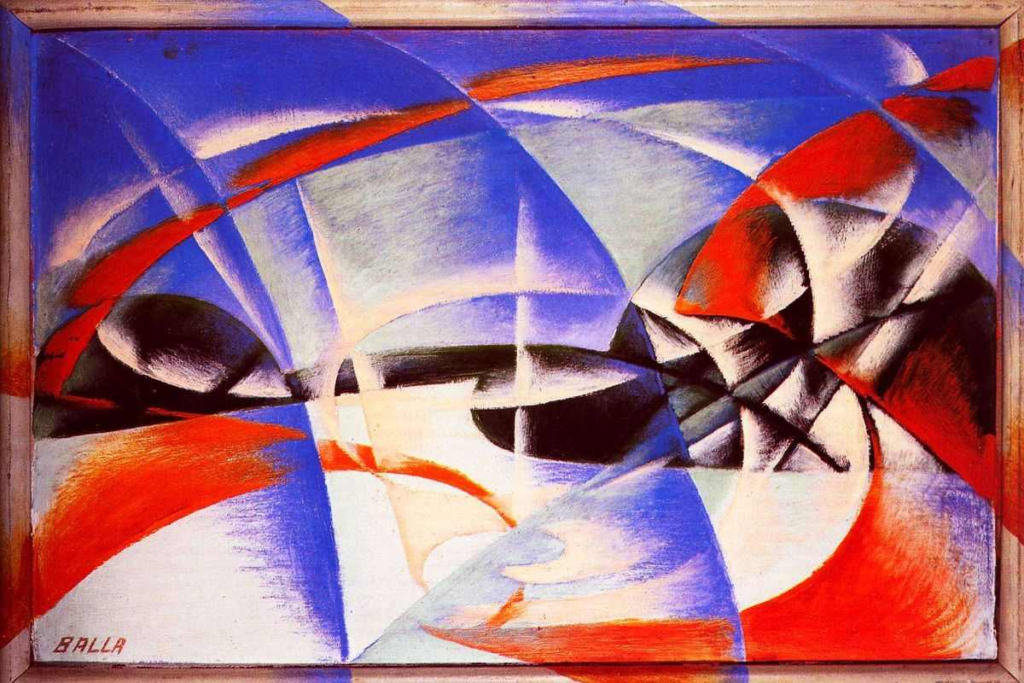
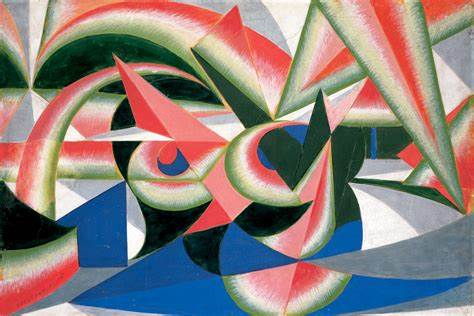
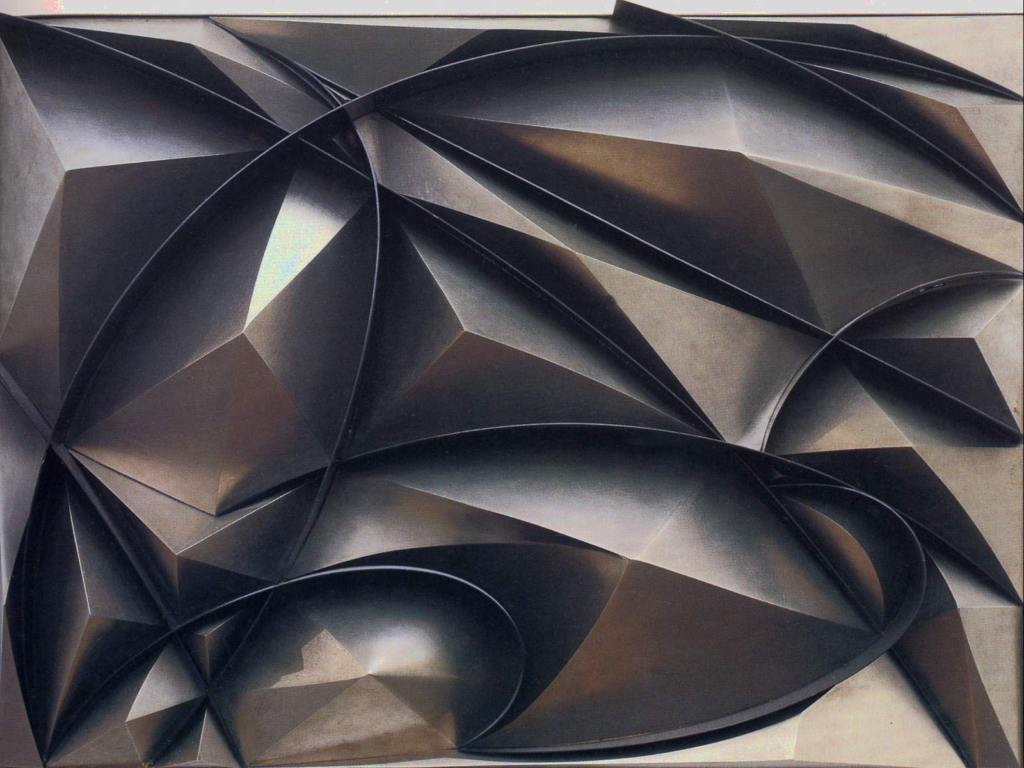
His work makes use of texture and shape. This image creates the appearance of depth with dark valleys between points and bright faces of points. The colours resemble a metal which creates a sense of danger combined with the sharp points.
Vorticism
Around the same time, Vorticism was rising in the UK. The British equivalent often appeared more abstract and shape driven due to its heavier cubism influences. The movement gained its name due to its typical appearance of a spiral of movement where the centre is still and the outsides of the frames appear moving. The movement expressed energy and dynamism towards an industrial future which was soured by WW1 dissipating the movement. Both movements started from a still center and created dynamic movement moving outwards as the name would suggest. The most visible difference is usually the subject where futurism may show a bike or performer and vorticism shows abstract shapes.
